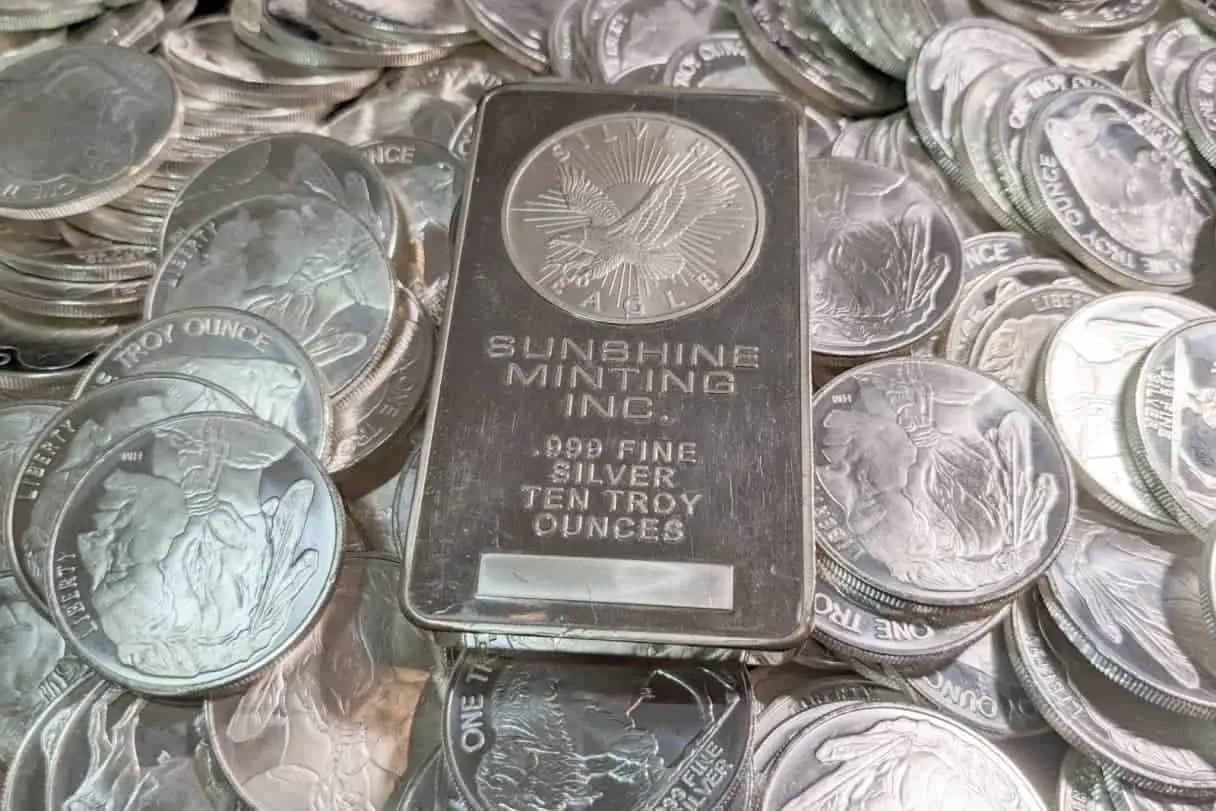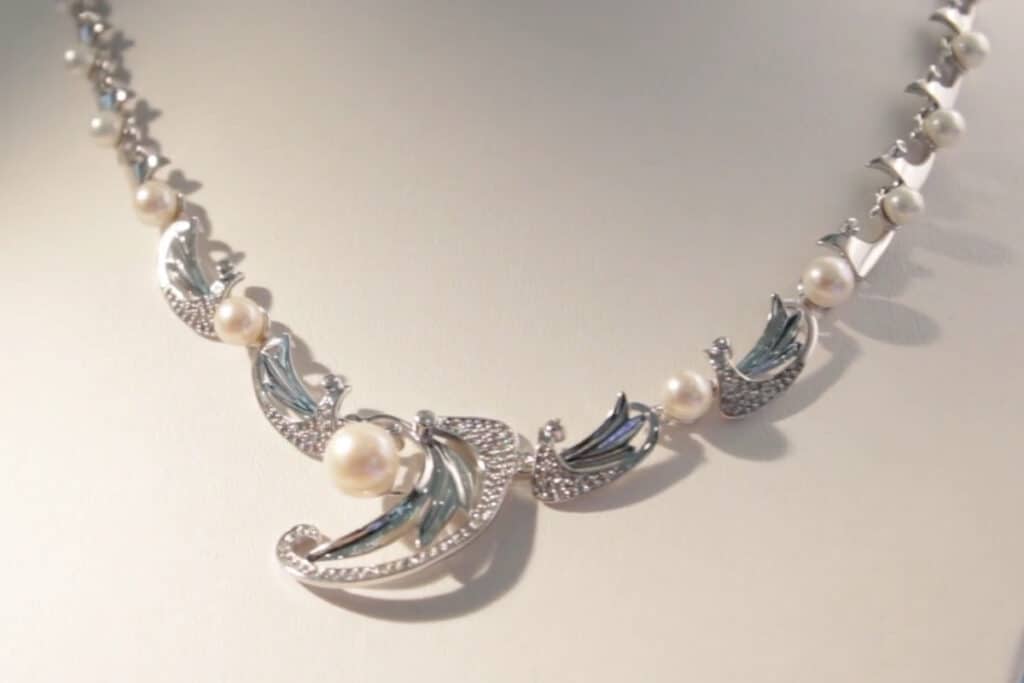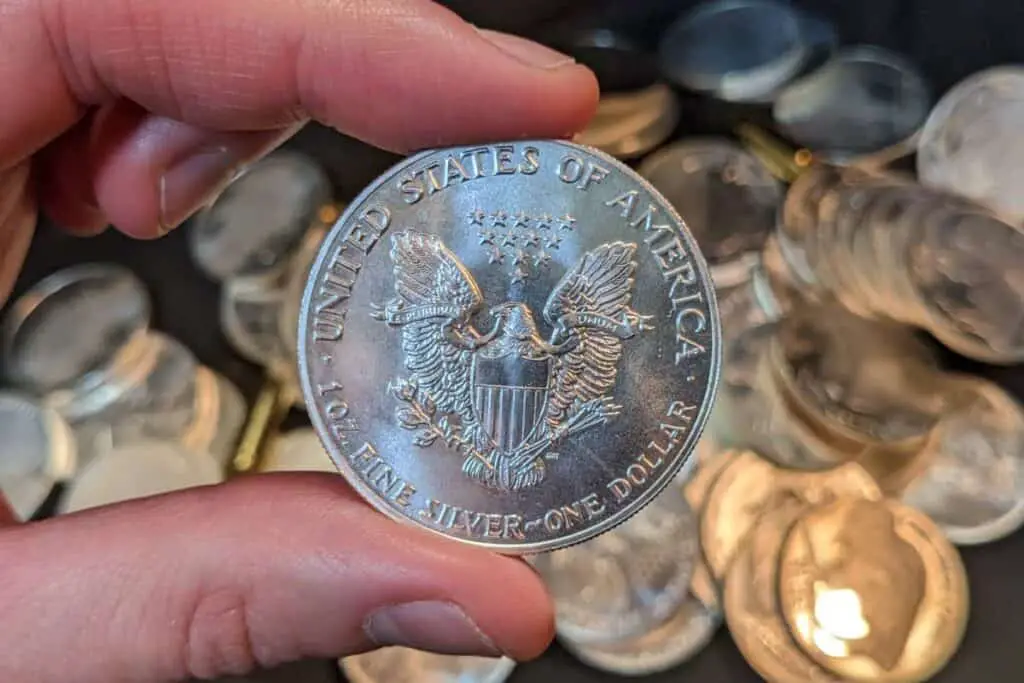What is 999 Silver? (Fine Silver Facts and Value)
Learn about pure silver, how it’s made, it’s uses, and it’s value
By Jane Pardo | Updated June 23, 2023
Silver is a valuable metal that comes in various purity levels. When buying investment-grade silver, you’ll probably see a .999 stamp certifying its purity and quality.
So, what exactly is 999 silver, and what makes it different from other silver alloys?
Read on to learn everything about fine silver, from the physical properties of this metal to its uses in today’s modern world.
What is 999 silver?
Silver that is 99.9% pure with only tiny amounts of impurities and no other metal additions is called 999 silver, also known as fine silver, pure silver, or “three nines fine.”
While softer and less shiny than other silver alloys, 999 silver has a pristine, tarnish-free appearance that lasts many years.
However, pure silver is a naturally soft metal. Since 999 silver is the closest to pure silver, it’s much softer than lower grades of silver alloys.
Benefits:
Drawbacks:
Process of creating 999 silver
Silver in its natural form is rarely 100% pure. It occurs in ores such as galena and argentite. After extracting this precious metal from the earth, it undergoes various refinement processes to produce fine silver.
Silver in its natural form is rarely 100% pure. Ores such as argentite, galena, and cerargyrite contain silver, which is extracted through smelting or chemical leaching.
After extracting this precious metal from the earth, it undergoes various refinement processes to produce fine silver.
Highly pure silver is too soft and malleable for modern applications. Manufacturers reshape silver and strengthen it with alloys for various uses, ranging from industrial and investment to jewelry and mirrors.
- Refining silver determines its pureness and value using a grading system called millesimal fineness. The first four numbers define the pure silver content in a particular item. The highest purity the current technology can create is 99.99% or .9999 purity, also called ultrafine silver.
Next to fine silver is sterling silver, featuring 92.5% purity. Sterling silver is widely used in making silver jewelry and tableware.
Uses of 999 silver
Fine silver is generally not ideal for industrial and commercial uses, as it’s too soft and easy to bend. Here are the modern uses of 999 silver:
Bullion investment products
Manufacturers commonly use fine silver to craft bullion bars and coins for silver investment and trading. With 999 silver, it’s easier for investors to determine the overall value of a silver product by multiplying the spot price of silver by a bar’s silver ounces.
Fine silver is highly sought after and widely traded in markets like metal and commodities exchanges, although other grades of silver are also traded.
Silver bullion bars and coins are long-time favorites when it comes to silver bullion investment. Silver bullion bars usually come in 1-ounce, 5-ounce, 10-ounce, and 100-ounce sizes.
- Pressed silver bullion bars: Mints craft pressed silver bars by cutting silver into a particular size and weight and stamping it with specific details, including the refiner’s name and the bar’s weight and purity. Pressed silver bars boast a sleek, metallic shine.
- Poured silver bars: Alternatively, mints pour melted silver into molds, weigh it, and provide certificates showing its weight, purity, and origin. Poured bars display a less polished appearance and unique characteristics, making them visually appealing to silver collectors and investors.
- Silver bullion coins: Silver coins are more complex to mint and provide excellent value as collectibles, leading to higher premiums over the spot price. The more limited in quantity, the higher the value over time. The world’s most renowned mints each provide a signature silver coin. For example, the US Mint is well-known for issuing the American Silver Eagle, whereas the Royal Canadian Mint is reputable for issuing the Silver Maple Leaf.
Fine jewelry
While 925 silver (92.5% pure silver) is the most widely used type of silver in jewelry, it’s possible to use 999 silver to craft striking jewelry pieces.

- Fine 99.9% silver is suitable for jewelry like brooches and necklaces. You can use fine silver jewelry on special occasions but not every day, as it scratches and dents easily.
- Jewelry exposed to daily wear and tear, like rings, typically features lower-grade but sturdier silver alloys like sterling silver.
Learn more about the modern applications of silver.
What is 999 silver worth today?
At the time of writing this article, the price of silver is $25.18 per one troy ounce, $0.81 per gram, and $809.56 per kilo.
The lowest price for silver in the last 52 weeks is $17.09.
The best fine silver coins for investment
Silver is much more affordable than gold, making it an easily accessible option for investors and enthusiasts. Silver bullion bars and coins are solid assets to diversify your precious metals portfolio.

If you’re interested in collecting silver, explore these valuable fine silver coins to expand your collection.
- American Silver Eagles
- Canadian Silver Maple Leafs
- Mexican Silver Libertads
- British Silver Britannias
- Australian Silver Kangaroos
- Austrian Silver Philharmonics
- Somalian Silver Elephants
Final thoughts
Overall, silver is an excellent asset to improve your investment portfolio and use as an inflation hedge.
Be sure to shop silver at reputable dealers to avoid counterfeits, whether investing in silver bars or coins.
With the right assortment of assets, you can build wealth and have a safe haven in times of economic uncertainty.
Written by Jane Pardo

Jane Pardo is our senior gold & silver expert. Jane lends insight into precious metals investing, collecting, testing, and maintenance.
Trending posts under
As participant in an affiliate advertising program, we earn from qualifying purchases.